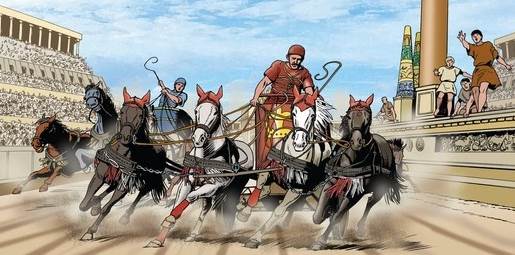
Quadriga
A quadriga is a chariot drawn by four horses abreast, commonly used in ancient Roman and Greek races, processions, and military triumphs. It was often associated with victory and divine power, frequently depicted in classical art, coins, and sculptures. In Roman triumphs, victorious generals or e...
archaeologs EnglishArtifacts, Tools
EnglishArtifacts, Tools